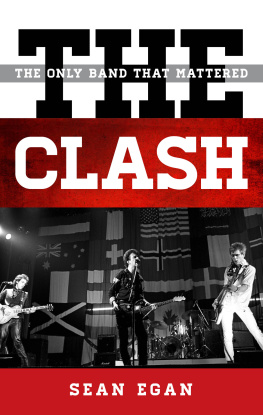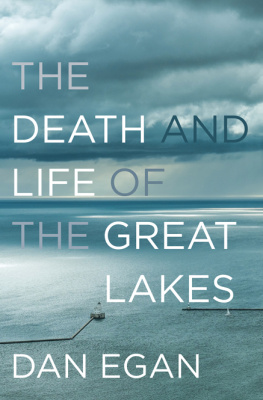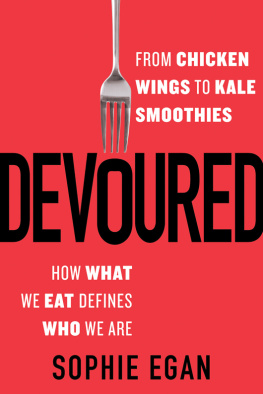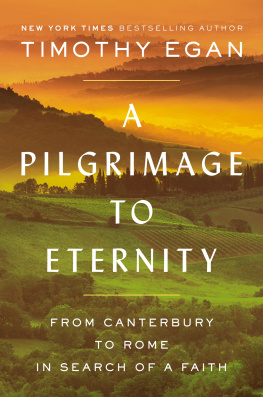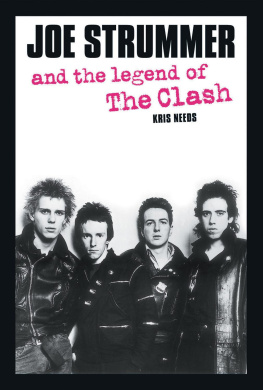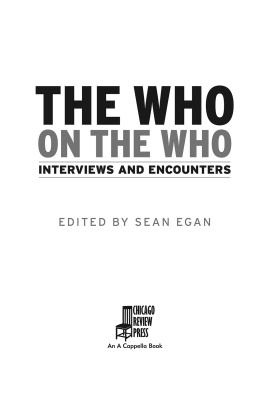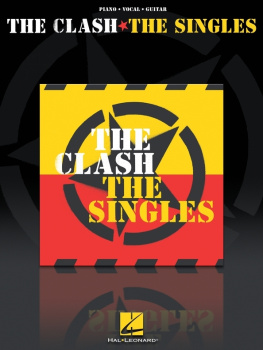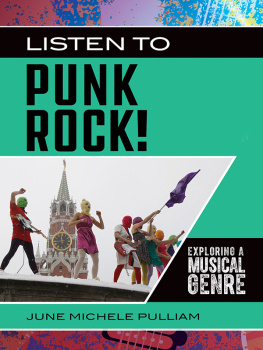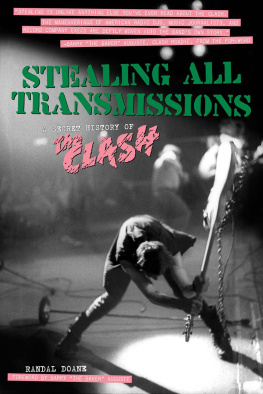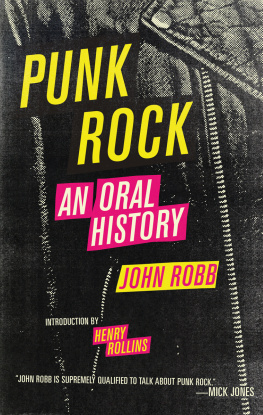A list of credits and copyright notices for the individual pieces in this collection can be found on pages 36566.
INTRODUCTION
The Clash thought they could change the world. They never did, but in the attempt they created some of the greatest popular music of all time.
The bands eponymous 1977 debut LP was punk rock to its core. Its lyrics were a perfect snapshot of a grey, low-waged, strife-torn Britain, and its music an exquisite blitzkrieg. A maladroit production to which no established rock act would have attached its name actually served to enhance the records menacing edge.
Following imperishable stand-alone singles Complete Control and (White Man) in Hammersmith Palais, the Clash acquiesced to big-name American producer Sandy Pearlman helming their second album. On 1978s Give em Enough Rope, their songs of street life were given a glossy treatment which, though sometimes incongruous, made for a worthy follow-up to their already hallowed debut.
Resplendent tunes, wide-screen production, adroit assimilation of multiple genres, and blush-making humanity ensured that with third album London Calling, released in their home country in 1979, the Clash created a new punk paradigm that proved dissident music needed to be neither glum nor abrasive. Meanwhile, the band finally came unequivocally good on their incessant men-of-the-people posturing: they successfully insisted on the double set retailing for the price of a single LP.
After that triumph there followed an unexpected dip in the Clashs fortunes, at least on home turf. American fans remember the early eighties as a glorious period in the Clashs career culminating in them closing down Times Square as they performed seventeen consecutive concerts at Bond International Casino. In Britain, in contrast, they were becoming a joke, perceived as neglecting their native fans and having gone all Americana particularly grievous offence for the composers of the broadside against cultural imperialism Im So Bored with the U.S.A.
Them releasing triple album Sandinista! (1980) was deemed another betrayal, smacking of the rock-aristocracy self-indulgence against which they had loudly set out their stall. Stripped down to a single disc, the record would have revealed the Clash to be as excellent and relevant as ever, but consumers and critics were understandably resentful about wading through dross to get to gold.
By the time of a planned British tour to promote fifth album Combat Rock (1982), UK interest in the Clash had so declined that rhythm guitarist, chief lyricist, and main singer Joe Strummer had to stage a disappearance to drum up sales. Although it featured the harrowing anthem of the dispossessed Straight to Hell, the album was uncertain and spotty. Yet a manageable single-disc format, industrious marketing, and the infectious, antifundamentalist single Rock the Casbah saw the band finally properly break America.
Internal division resulted in Mick Jones being fired by the group in September 1983. Those who thought preposterous the idea of a Clash bereft of their lead guitarist and Strummers songwriting foil seemed to be proven right by Cut the Crap, a cringe-making self-parody released in 1985. The final Clash studio album, it besmirched a great bands legacy.
Although sorely diminished at the point of their split, the Clashs reputation posthumously soared. They were increasingly celebrated for the excellence of their corpus and the skepticism they had shown toward their own celebrity, while the fact of their early dissolution ensured no tarnishing of their legend by the familiar music-industry pattern of long, slow artistic decline. The Clash and London Calling regularly featured in critics polls to determine historys greatest albums. They were popular inductees into the Rock & Roll Hall of Fame.
Clash interviews had always revealed four distinct personalities. Strummer had a habit of snarling through his broken front teethoften when his supposedly shameful bourgeois hinterland was raisedbut behind the belligerent exterior pulsated a huge warmth and a brain buzzing with ideas for social justice. Jones was frequently sweet and sensitive, spurning the hauteur that had become all too common in rock stars; then again he was often a prima donna as petulant and self-absorbed as any of the old guard the Clash were supposedly making redundant. Bassist Paul Simonon was cooperative and pleasant but didnt have much insight to offer; he concentrated on stage design and working on his smoldering looks. Drummer Nicky Topper Headon was a complex character. The son of teachers, his respectable background didnt stop him falling prey to a debilitating heroin addiction that eventually saw him thrown out of the band.
Those Clash interviews were multitudinous and mesmerizing. Infused with the messianic punk spirit, the Clash engaged with the press like no rock group before or since, treating the interview almost as an address to the nation. The frequency (weekly) and multiplicity (four) of British music papers meant that they were never out of them, new product or no.
In print, they were at once gratingly nave and stirringly idealistic. They were forever making promises, among them that there would never be a Clash album costing six pounds or more, that they would never agree to perform on populist BBC-TV chart show Top of the Pops, that they would not allow exorbitantly priced concert tickets, that they would not play seated venues, that they would set up a club or live venue for the kids and a radio station for people who liked less mainstream sounds. This is not even to mention all the covenants about refusal to compromise and art-over-commerce made implicit by their confrontational image and defiant songwords.
Their pronouncements were welcomed, but put the Clash in a no-win situation from the beginning. In the hysterically purist climate engendered by punk, scrutiny was pitiless. Desperate that rock never again lose its sociopolitical relevance like it had in the first half of the seventies, the British music papers perpetually used the Clash as a sellout litmus test. When the bands ideals inevitably bumped up against the realities of life and exigencies of career, cries of betrayal dogged their steps. The quality of their music literally became a side issue.
Over in the States, the Clashs rebel anthems and urban-guerrilla chic were perceived by music scribes as a refreshing antidote to corporate rock, and the bands spurning of the standard ingratiating interview tone in favor of finger-wagging over the shortcomings of their host country was deemed masochistically exhilarating.
It all means that the Clashs back pages are voluminous, crackle with controversy, and constitute a snapshot of a uniquely fractious period in modern history, music- and politics-wise.
The Clash on the Clash rounds up the best of the bands many landmark interviews. Whether it be their audiences with the simpatico likes of Sniffin Glue and Zigzag, their increasingly testy encounters with the correspondents of pious UK weeklies New Musical Express and Melody Maker, or their friendlier but no less thought-provoking conversations with US periodicals like Creem, Rolling Stone


